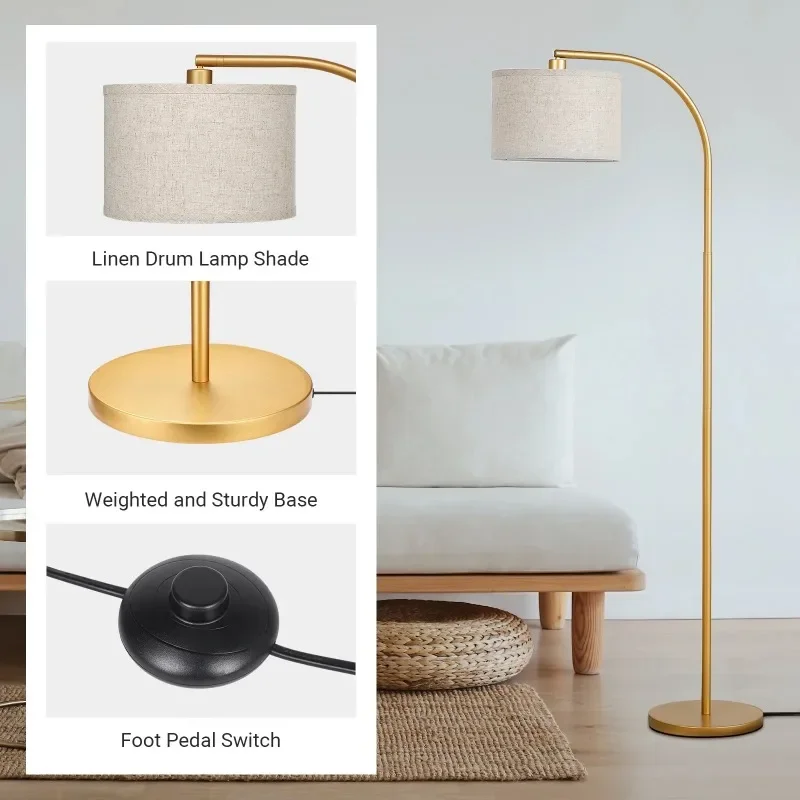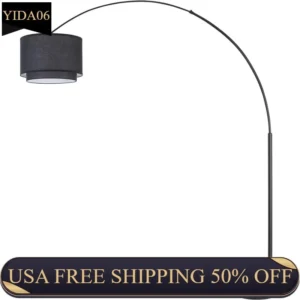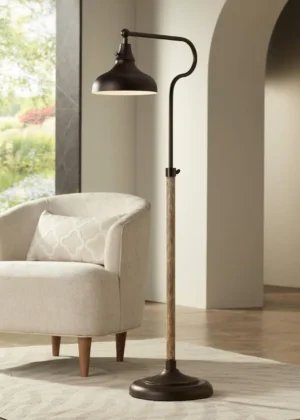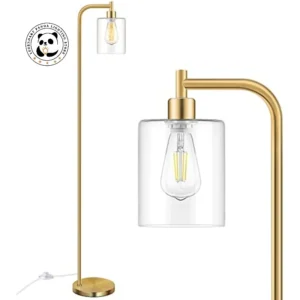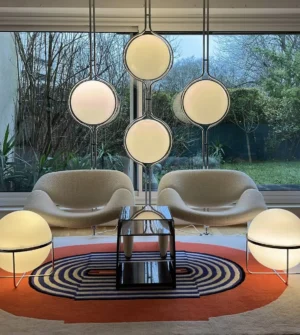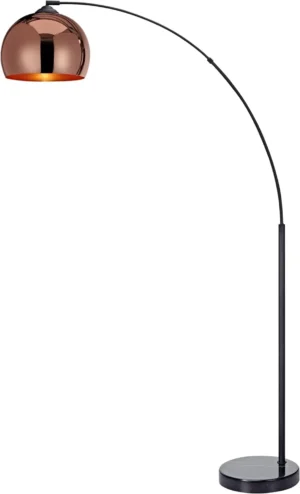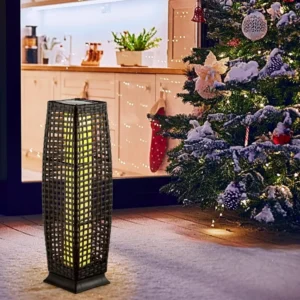Introduction: Understanding the Strategic Value of Corner Lighting
When it comes to interior design, lighting plays a crucial role in creating atmosphere, functionality, and visual appeal. Corner lighting—the strategic placement of lamps in room corners—offers both practical illumination and aesthetic enhancement that many homeowners overlook.
So, should lamps be placed in corners? The answer is a definitive yes—when done strategically. Corner lighting represents one of the smartest approaches to room illumination, offering several key advantages:
- Maximizes usable floor space in the center of your room
- Eliminates dark, shadowy corners that can make spaces feel smaller
- Adds visual interest and dimension to otherwise neglected areas
- Creates balanced light distribution throughout the room
- Establishes depth that can make rooms feel larger and more inviting
While corner lamp placement can transform your space, it’s important to understand that it forms just one part of a well-designed lighting plan. The most effective interior lighting combines various light sources at different heights and positions to create layers of illumination that serve different purposes.
Creating comfortable reading corners with arc lamps represents one popular application of corner lighting, but as we’ll discover, the possibilities extend far beyond just reading nooks.
The Strategic Benefits of Placing Lamps in Corners
Corner placement of lamps isn’t just about filling empty space—it’s a deliberate design strategy with multiple benefits that enhance both the functionality and aesthetics of your living spaces.
Space Optimization: Maximizing Room Functionality
Corners often represent underutilized real estate in most rooms. By placing lamps in these areas, you:
- Free up valuable central floor space for movement, conversation areas, and furniture placement
- Create a more spacious feeling room by pushing light sources to the perimeter
- Maximize the functional square footage in smaller apartments and rooms
This space optimization becomes particularly important in compact living situations, where every inch matters. Slim arc lamp solutions for tiny apartments can provide ample light while taking up minimal floor space, extending from corners to illuminate larger areas of the room.
Eliminating Dark Corners: Creating Balanced Illumination
Dark corners can make rooms feel smaller, create an unwelcoming atmosphere, and even cause eye strain as your vision adjusts between brightly lit and dark areas. Corner lighting addresses these issues by:
- Preventing the “cave effect” that occurs when light is concentrated only in central areas
- Creating a more psychologically comfortable environment with even illumination
- Establishing the first layer of ambient lighting that serves as a foundation for other light sources
When light radiates from corners, it spreads more evenly across walls and ceilings, creating a naturally diffused glow that feels more comfortable than harsh directional lighting from overhead fixtures alone.
Enhancing Visual Depth and Dimension
Strategic corner lighting adds a new dimension to your rooms by:
- Creating subtle shadow play that adds texture to walls and architectural features
- Establishing visual layers that make rooms feel more dynamic and interesting
- Providing a backdrop effect that adds perceived depth to the room’s dimensions
When light originates from corners rather than just the center of a room, it creates more varied patterns of illumination that highlight different aspects of your décor and architecture. Learning how to position arc lamps for reading involves understanding these principles of light distribution.
Types of Lamps Ideally Suited for Corner Placement
Different lamp styles offer varying benefits when placed in corners. Understanding which types work best helps ensure both functional and aesthetic success in your lighting design.
Floor Lamps: Versatile Corner Illumination
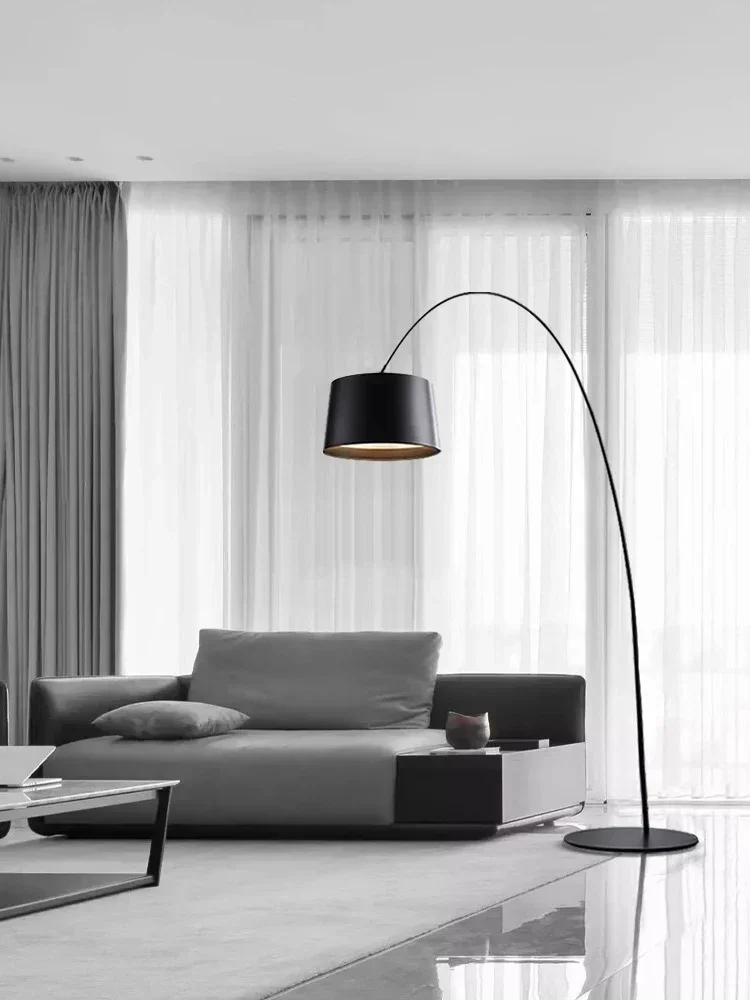
Floor lamps represent the most popular choice for corner placement, offering substantial illumination while requiring minimal setup. Typically standing 65-72 inches (165-183 cm) tall, they provide light at an ideal height for most rooms.
- Classic upright floor lamps direct light upward and outward, providing ambient illumination that softly fills the room
- Arc floor lamps feature a curved arm that extends from the corner over seating areas, making them perfect for reading nooks
- Tripod floor lamps offer stability with an interesting visual footprint, making them excellent statement pieces
- Tree-style floor lamps include multiple adjustable heads to direct light in various directions
- Torchiere lamps send light upward to bounce off ceilings, creating soft, diffused illumination
Large oversized arc floor lamps work particularly well in spacious corners, as their substantial presence can anchor a room while their extended reach provides light exactly where needed. The ability to adjust height and angle makes adjustable arc floor lamps especially versatile for corner placement.
Table and Accent Lamps for Corner Tables
When corners feature console tables, nesting tables, or accent furniture, table lamps provide focused illumination while adding decorative elements. Typically standing 20-30 inches (51-76 cm) tall, corner table lamps should:
- Complement the scale of the furniture they sit upon—neither too large nor too small
- Feature shade shapes that direct light effectively for the intended purpose
- Include finishes and materials that enhance your overall design scheme
When selecting corner table lamps, consider how the light will be used. For ambient lighting, wider shades that disperse light broadly work well, while task-oriented corner lighting benefits from more directed illumination.
Wall-Mounted Corner Lights and Sconces
For corners where floor space is limited or you want to maintain an open feel, wall-mounted options provide excellent solutions:
- Corner sconces can be installed at precisely the height you need (typically 60-72 inches/152-183 cm from the floor)
- Adjustable wall-mounted lights can swing or pivot to direct light where needed
- Vertical wall lamps can create dramatic up-and-down light patterns that emphasize ceiling height
Wall-mounted corner lighting works particularly well in transitional spaces, narrow rooms, or areas where furniture placement limits floor lamp options.
Modern Corner-Specific Lighting Innovations
Contemporary lighting design has embraced the corner as a focus area, creating specialized solutions:
- Sleek LED corner lamps with minimal profiles that fit perfectly into right angles
- Color-changing corner lights that transform mood and atmosphere with the touch of a button
- Smart corner lighting that integrates with home automation systems
LED arc floor lamps represent the cutting edge of energy-efficient corner lighting, offering long life spans, cool operation, and often, adjustable color temperatures to suit different activities and moods.
Fundamental Lighting Principles for Effective Corner Illumination
Understanding basic lighting principles helps ensure your corner lamps contribute effectively to your overall lighting scheme.
The Three Layers of Light: Ambient, Task, and Accent
Professional lighting designers approach room illumination in layers, each serving a specific purpose:
- Ambient lighting creates the base level of illumination that allows safe navigation and general visibility. Corner lamps with broad light dispersion contribute effectively to this layer.
- Task lighting provides focused illumination for specific activities like reading, cooking, or working. Directional corner lamps, particularly the best floor lamps for reading, serve this purpose well.
- Accent lighting draws attention to artwork, architectural features, or décor elements. Corner uplights or adjustable spotlights excel in this role.
The most successful lighting designs incorporate all three layers, with corner lamps often contributing to multiple categories depending on their style and placement.
Achieving Balanced Light Distribution
Even with corner lamps, proper balance remains essential:
- Aim for relatively uniform brightness levels throughout the room to prevent eye strain
- Position light sources at different heights to create visual interest and eliminate harsh shadows
- For larger rooms, use multiple corner light sources rather than relying on a single, overly bright lamp
The goal isn’t perfectly equal light everywhere but rather a harmonious distribution that eliminates excessively dark or bright areas while supporting the room’s function and mood.
Selecting the Right Brightness and Color Temperature
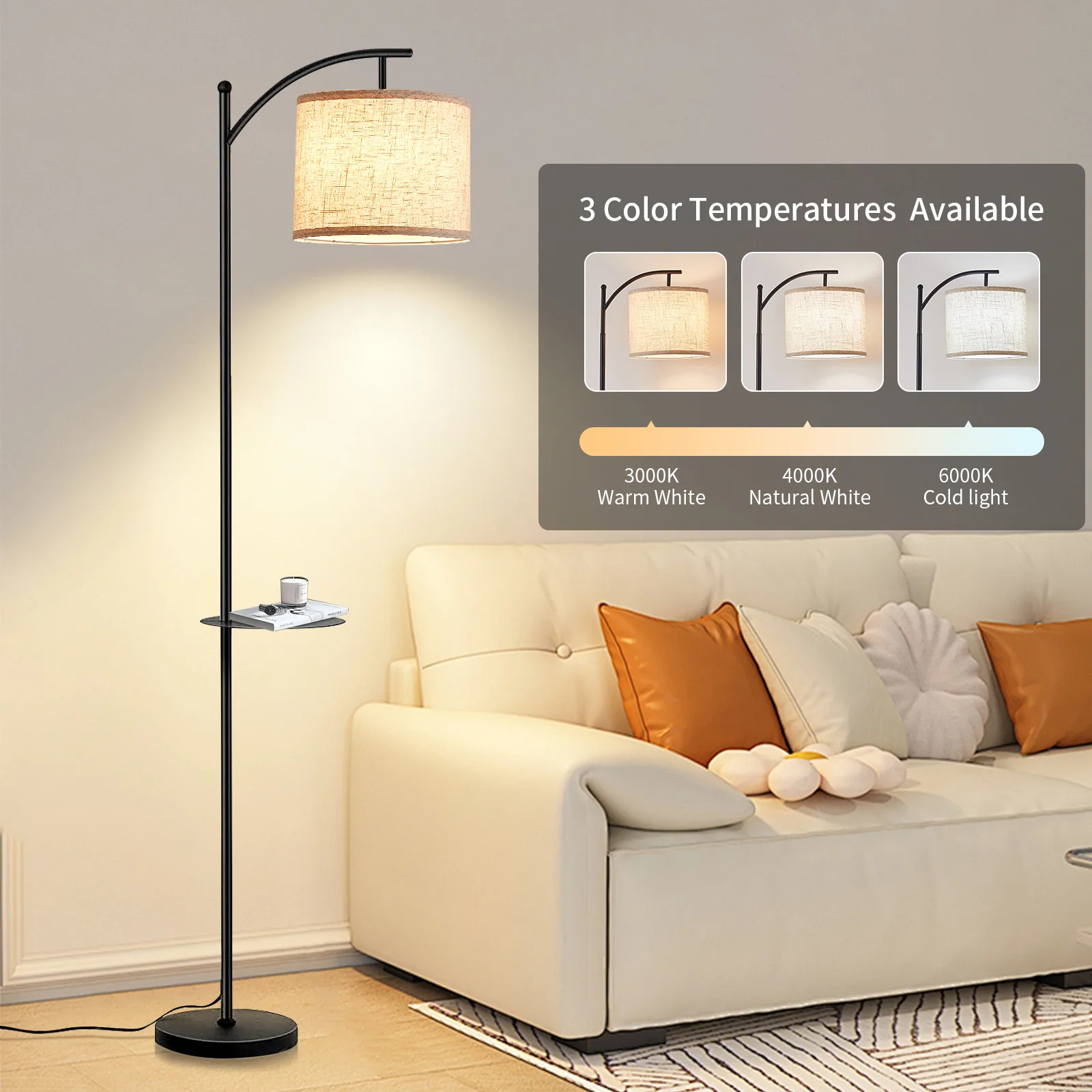
Both brightness and color temperature significantly impact how corner lighting feels:
| Room Type | Recommended Color Temperature | Ideal Brightness |
|---|---|---|
| Living Room | Warm (2700-3000K) | 1500-3000 lumens |
| Bedroom | Very warm (2400-2700K) | 1200-2400 lumens |
| Home Office | Neutral to cool (3500-5000K) | 2000-4000 lumens |
| Reading Area | Warm to neutral (3000-4000K) | 400-800 lumens (focused) |
Dimmable arc floor lamps offer versatility that makes them ideal for corner placement, allowing you to adjust brightness based on time of day, activities, and desired mood.
Strategic Corner Lamp Placement by Room Type
Each room type presents unique opportunities and challenges for corner lighting placement.
Living Room Corner Lighting Strategies
Living rooms typically benefit from multiple lighting layers, with corners playing a crucial role:
- Position reading lamps in corners near seating, with the light source approximately 58-64 inches (147-163 cm) high for seated reading comfort
- Place ambient corner lights opposite main windows to balance natural light distribution
- Use corner lighting to highlight architectural features like fireplaces or built-in shelving
The versatility of living rooms demands flexible lighting solutions. Perfectly lighting reading corners requires careful positioning so light comes from slightly behind and over the shoulder of the reader, minimizing glare and shadows.
Bedroom Corner Illumination Techniques
Bedrooms require more nuanced corner lighting that supports both function and relaxation:
- Lower brightness levels (400-800 lumens) create a calming atmosphere
- Warmer color temperatures (2400-2700K) promote relaxation and better sleep
- Corner lamps near dressing areas benefit from higher Color Rendering Index (CRI) ratings to accurately show clothing colors
Corner lighting in bedrooms should complement bedside lamps rather than replace them, creating balanced illumination throughout the room while maintaining a restful environment.
Home Office and Reading Nook Corner Lighting
Task-focused spaces like home offices and reading nooks require more specialized corner lighting:
- Position task-oriented corner lamps to prevent screen glare while providing sufficient illumination (35-50 footcandles/375-535 lux)
- Consider adjustable corner lighting that can be redirected as needed throughout the day
- Supplement natural light with corner positioning that minimizes shadows on work surfaces
Minimalist arc floor lamps work particularly well in office settings where clean lines and unobtrusive designs complement focused work environments.
Contemporary Arc Floor Lamp, Large Arc Floor Lamp, Oversized Arched Floor Lamp
$460.63 Select options This product has multiple variants. The options may be chosen on the product pageAdjustable Arc Floor Lamp, Bronze Arc Floor Lamp
Price range: $440.95 through $558.52 Select options This product has multiple variants. The options may be chosen on the product pageBrass Arc Floor Lamp, Contemporary Arc Floor Lamp, LED Arc Floor Lamp
Price range: $490.72 through $522.04 Select options This product has multiple variants. The options may be chosen on the product pageChrome Arc Floor Lamp, LED Arc Floor Lamp
Price range: $304.95 through $1,210.40 Select options This product has multiple variants. The options may be chosen on the product pageContemporary Arc Floor Lamp, Large Arc Floor Lamp, Marble Base Arc Floor Lamp
$224.94 Select options This product has multiple variants. The options may be chosen on the product pageLED Arc Floor Lamp, Rattan Arc Floor Lamp
$313.58 Select options This product has multiple variants. The options may be chosen on the product page
Overcoming Common Corner Lighting Challenges
Corner lighting presents unique challenges that require practical solutions:
Q: What if I don’t have an outlet near my ideal corner lamp location?
A: Consider flat extension cords designed to run under rugs, cord covers that can be painted to match walls, or battery-operated lamps for truly outlet-free corners. Some modern homes also benefit from floor outlets that can be installed under rugs.
Q: How do I light an awkward corner with an unusual angle?
A: Adjustable lamps with swivel bases or articulating arms can adapt to non-90-degree corners. Wall-mounted sconces also work well for irregular corner angles as they can be positioned precisely where needed.
Q: How can I prevent my corner lamp from being blocked by furniture?
A: Arc lamps that reach over furniture provide an elegant solution, as do taller floor lamps that rise above obstacles. For lower-profile solutions, consider wall-mounted fixtures that don’t require floor space.
Q: Will too many corner lamps create an unbalanced look?
A: Balance corner lighting with central ceiling fixtures and mid-room table lamps. A good rule of thumb is to ensure no more than 60% of your total lighting comes from corners to maintain visual harmony.
Advanced Corner Lighting Techniques and Enhancements

Once you’ve mastered basic corner lighting principles, these advanced techniques can elevate your lighting design further.
Leveraging Mirrors to Amplify Corner Light
Strategically placed mirrors significantly enhance corner lighting effects:
- Position mirrors on walls adjacent to corner lamps to reflect and multiply the light output
- Angle mirrors to bounce light toward darker areas of the room
- Consider mirrors with beveled edges that create interesting light refraction patterns
This technique works particularly well with large arc lamps in open spaces, where the reflected light can duplicate the elegant curve of the lamp design while extending illumination deeper into the room.
Smart Lighting Integration for Corner Lamps
Modern technology enhances corner lighting functionality:
- Smart plugs allow remote control of traditional corner lamps
- Voice-controlled systems can adjust brightness and in some cases, color temperature
- Programmable timers can activate corner lighting at sunset or when entering rooms
These technologies prove especially valuable for hard-to-reach corner lamps or when creating coordinated lighting scenes that involve multiple light sources throughout your space.
Seasonal Adjustments to Corner Lighting
As natural light changes throughout the year, corner lighting can be adjusted accordingly:
- Increase corner lighting intensity during winter months when days are shorter
- Position corner lamps to compensate for seasonal changes in sunlight direction
- Consider warmer color temperatures in winter months and slightly cooler tones in summer
These subtle adjustments help maintain consistent ambient light levels while acknowledging the psychological impact of seasonal light changes.
Are Corner Lamps Always the Right Solution? When to Consider Alternatives
While corner lighting offers numerous advantages, it isn’t always the ideal approach for every space:
Q: When might corner lighting be insufficient on its own?
A: Very large rooms, spaces with vaulted ceilings, or rooms requiring significant task lighting often need supplemental ceiling fixtures or centrally positioned lamps in addition to corner lighting.
Q: Are there spaces where corner lamps don’t work well?
A: Extremely small rooms might feel cramped with corner floor lamps, and spaces with extensive built-ins or architectural features may not have suitable corners available.
Q: How do I balance corner lighting with other light sources?
A: Follow the rule of three—aim for at least three light sources at different heights in any room, with corner lighting typically representing one or two of these sources. The ultimate guide to reading arc floor lamps provides excellent insights on integrating these versatile fixtures into a complete lighting plan.
For most living spaces, corner lamps work best as part of a thoughtfully designed lighting system rather than as the sole illumination source. By understanding when to use corner lighting and when to supplement it with other fixtures, you’ll create more functional, comfortable, and visually appealing spaces.
With strategic placement and selection, corner lamps can transform your living spaces—illuminating dark zones, maximizing floor space, and adding visual interest that enhances your entire interior design.

